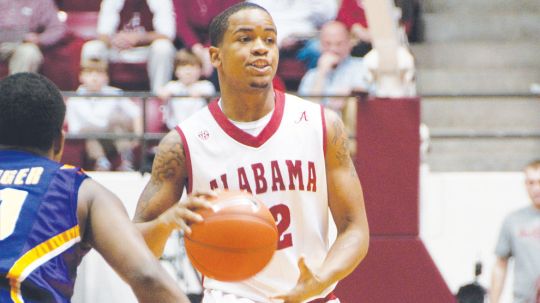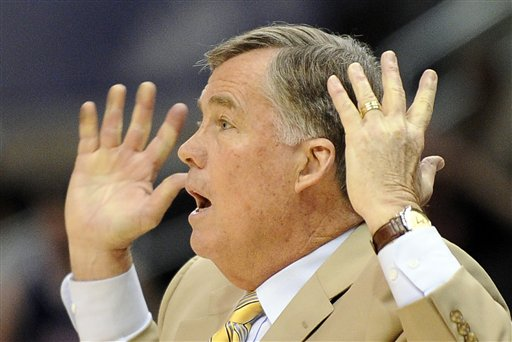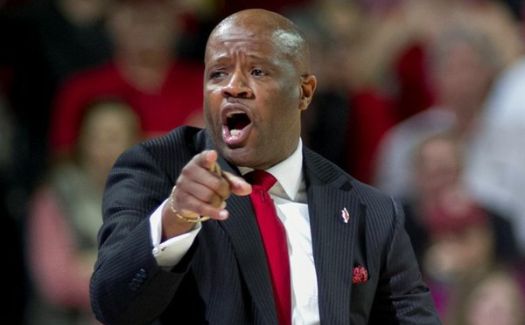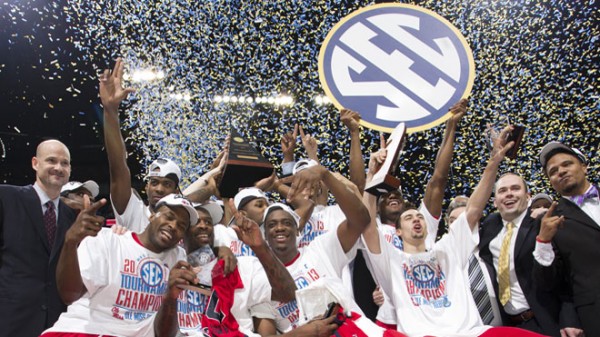Posted by Greg Mitchell on October 30th, 2013
Optimism. It’s what makes this an exciting time of year. You may have an idea what lies ahead for your team, but you don’t know for sure. Surprises happen. A freshman proves that the recruiting services were wrong, an underachieving group of seniors plays with new urgency, or the third-year coach’s offensive system finally clicks. In honor of this cliched “everyone has the same record” feeling, let’s take a glass half-full look at the 14 teams of the SEC. Here’s why each SEC “West” team will exceed their expectations in 2013-14.
To take a look at the SEC “East” teams’ best-case scenarios, click here.
Alabama
The Expectation: Middle of the pack SEC + NCAA Tournament bubble
Why They’ll Exceed It: Many feel that Julius Randle winning SEC Player of the Year is a foregone conclusion. Trevor Releford challenges this idea in becoming one of the top scorers in the country. As the returning SEC assists leader, he adds to this total by also setting up Levi Randolph and Rodney Cooper, both of whom become more reliable perimeter shooters. Seven-footer’ Carl Engstrom shows no ill effects from his torn knee ligaments, and uses his size to create match-up problems on both ends. Forward Nick Jacobs builds on his improved play at the end of last season, and fills the rebounding void created by Moussa Gueye’s transfer. Anthony Grant rides his star point guard off the bubble and into the NCAA Tournament.

Trevor Releford is the active SEC leader in points, assists and steals.
Auburn
The Expectation: Bottom tier SEC + no NCAA Tournament
Why They’ll Exceed It: Yes, a three-win team replacing its leading scorer and best player (Frankie Sullivan) can exceed expectations. Virginia Tech transfer K.T. Harrell will be a big reason why. He was a 42 percent three-point shooter during his freshman year, and he recaptures his magic. Chris Denson provides a slashing counterpart and Tony Barbee finds himself with an offensively versatile backcourt. Freshman Tahj Shamsid-Deen grabs the point guard position and makes it all work. Change is inevitable with nine newcomers. Seven-foot freshman Ronald Delph and Brinas Griciunas join incumbent seven-footer Asauhn Dixon-Tatum to create a giant rotation other teams simply don’t have. Auburn fights its way to a .500 SEC record.
Arkansas
The Expectation: Middle of the pack SEC + NCAA Tournament bubble
Why They’ll Exceed It: Mike Anderson has elite talent in the form of freshmen forwards Bobby Portis and Moses Kingsley. The duo join Coty Clarke to form a shot-blocking unit that can cover for aggressive defense by Razorback guards. This leads to steals and turnovers that fuel Anderson’s up-tempo system. Upperclassmen Mardracus Wade, Rashad Madden, Kikko Haydar and Rickey Scott improve as their collective eligibility ticks away. Even if none takes a giant step forward, they all play well enough to become the effective wave of players Anderson needs to pressure opposing guards. A reliable distributor must be found, and either Madden or Wade, the top two assist percentage returnees, grab that role. Arkansas finally wins a handful of road games, and Anderson returns to the NCAA Tournament with his high-pressure system in full gear.
Read the rest of this entry »
| microsites, sec
| Tagged: alabama, arkansas, auburn, lsu, mississippi, mississippi state, ole miss, texas a&m
Share this story


















































